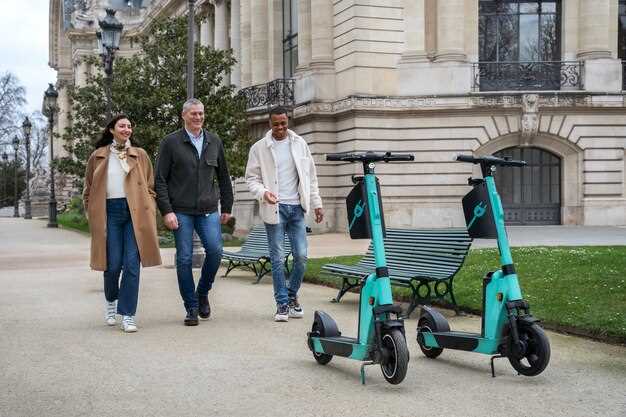
As urban areas continue to evolve, the need for efficient and sustainable transportation solutions becomes increasingly important. Commuting in bustling cities can be a challenge, but electric motorcycles are emerging as a popular choice for those seeking an eco-friendly and agile way to navigate through traffic. With their remarkable performance and lower environmental impact, electric motorcycles offer a practical alternative to traditional gas-powered vehicles.
In this article, we will explore the top electric motorcycles specifically designed for urban commuting. These bikes not only reduce carbon emissions but also provide a unique riding experience. Incorporating advanced technology and innovative designs, electric motorcycles are transforming the way we think about urban mobility. From impressive range and speed to convenient charging solutions, the benefits of electric motorcycles extend beyond just the ride.
As cities become more congested, it is crucial to find smart commuting options that prioritize sustainability and convenience. Join us as we delve into the best electric motorcycles that cater to urban commuters, highlighting their features, advantages, and why they are becoming the go-to choice for city dwellers.
Choosing the Right Electric Motorcycle for Your Daily Commute

When it comes to commuting in urban environments, selecting the right electric motorcycle is essential for comfort, efficiency, and practicality. The ideal model should align with your specific travel needs and lifestyle considerations.
First and foremost, assess your daily distance. If your commute is short, a motorcycle with a smaller battery capacity may suffice, while longer distances will require models with extended range capabilities. Look for options that provide at least a 60-mile range to ensure you can cover your round trip without the anxiety of running out of power.
Next, consider the motorcycle size and weight. A lightweight model is often easier to maneuver in congested traffic and narrow city streets. Furthermore, your height and comfort level on the bike should be taken into account; ensuring both feet can comfortably touch the ground when stopped is vital for safety.
Focusing on features such as speed and acceleration is important as well. Urban commuting typically involves quick stops and starts, so a motorcycle that offers responsive performance will enhance your travel experience. Check specifications for 0-30 mph times to find a suitable option for navigating city traffic.
Lastly, don’t overlook the importance of practicality. Storage options, charging times, and maintenance requirements should all be evaluated. Some models come with built-in storage compartments, while others may require aftermarket solutions. Additionally, consider how long it takes to recharge the battery to align with your daily schedule.
By taking into account these factors, you can confidently choose an electric motorcycle that will transform your daily commuting experience into a more enjoyable and efficient journey.
Understanding Charging Options and Battery Life for City Riding
When it comes to urban commuting on electric motorcycles, understanding charging options and battery life is crucial for a seamless riding experience. Electric motorcycles typically utilize lithium-ion batteries, which provide a balance of energy density, weight, and cycle life. Depending on the model, battery capacity can vary significantly, directly influencing the range and charging requirements.
For city riding, range is a primary concern, as urban environments often involve frequent stops and starts. Most electric motorcycles designed for commuting offer a range between 30 to 100 miles on a single charge, which is generally sufficient for daily trips. However, it’s essential to assess the specific routes and distances you plan to travel to ensure your chosen motorcycle meets your commuting needs.
Charging options for electric motorcycles are diverse, making it convenient for city dwellers. Level 1 charging uses a standard 120V outlet and is the slowest option, typically taking several hours for a full charge. Level 2 charging, available at public charging stations or through home installations, operates on a 240V outlet and can significantly reduce charging time, often completing a full charge in 4 to 8 hours.
Fast charging, available in select models, utilizes specialized stations to achieve a quick charge within 30 minutes to an hour, providing additional convenience for busy commuters. Many urban areas are increasingly integrating fast-charging infrastructure, enabling riders to recharge during work or leisure activities.
Battery life and maintenance are also pivotal considerations. Most manufacturers provide warranties spanning 2 to 5 years, depending on usage and care. Regular maintenance, protecting the battery from extreme temperatures, and avoiding complete discharges can prolong battery health and lifespan, making it crucial for efficient city commuting.
In summary, understanding the available charging options and battery life will enhance your urban commuting experience on an electric motorcycle. By selecting the right combination of charging capabilities and battery range, you can enjoy a practical and eco-friendly mode of transportation that meets your daily commuting requirements.
Reviewing Safety Features and Regulations for Urban Electric Motorcycles

As urban areas become increasingly congested, electric motorcycles are emerging as a popular choice for commuters seeking efficient and eco-friendly transportation. However, safety remains a paramount concern for riders navigating busy streets. Understanding the safety features and regulations specific to electric motorcycles can significantly enhance rider confidence and security.
Safety Features
Modern electric motorcycles are equipped with an array of safety features designed to protect riders. Advanced anti-lock braking systems (ABS) prevent wheel lock during hard braking, maintaining steering control and enhancing stability. Another crucial feature is the traction control system, which helps prevent wheel spin on slippery surfaces, ensuring safer acceleration in various weather conditions.
Additionally, many manufacturers incorporate LED lighting systems that improve visibility both day and night, allowing other road users to see electric motorcycles more easily. Some models also offer vehicle stability control, which assists in maintaining balance during turns and sudden maneuvering. Furthermore, features like smartphone integration provide riders with navigation and communication tools, allowing them to stay connected without compromising focus on the road.
Regulations
Safety regulations for electric motorcycles vary by region but generally encompass speed limits, licensing requirements, and certain safety standards. Riders must often hold a specific motorcycle license to operate electric models within urban environments. Additionally, helmet laws are mandatory in many jurisdictions, ensuring that all riders wear appropriate head protection.
In terms of vehicle classification, electric motorcycles must comply with local regulations regarding maximum power output and speed limits. For instance, many urban areas have designated low-speed zones where electric motorcycles are allowed to travel at reduced speeds, which helps reduce the risk of accidents and enhances pedestrian safety.
Compliance with emission standards is also critical. While electric motorcycles produce zero tailpipe emissions, manufacturers must still adhere to regulations regarding battery disposal and recycling. This is vital for ensuring sustainability and minimizing the environmental impact of electric vehicles.
In conclusion, as urban commuting increasingly embraces electric motorcycles, understanding their safety features and the relevant regulations is essential for all riders. By prioritizing safety, both through advanced technologies and adherence to local laws, electric motorcycle users can enjoy a safer commuting experience while contributing to the reduction of urban pollution.
